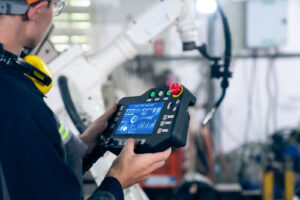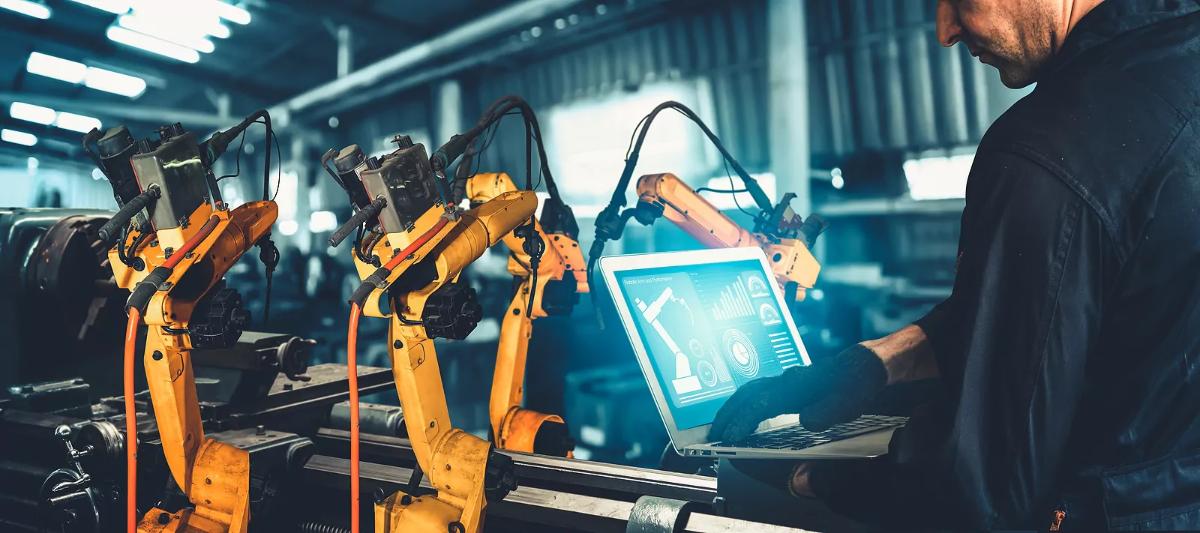Digital automation remains one of the hottest topics among manufacturing executives, plant managers, industry operation professionals and finance stakeholders. Our 2022 Digital Inventory Report captured key decision makers’ mindsets, challenges, and planning initiatives as it relates to digital automation technologies.
Let’s take a closer look at those technologies that include mobile barcoding, robotics and more, and the reasons manufacturers have implemented or plan to implement them in the near future.
What is digital automation in manufacturing?
For manufacturers, a variety of technologies belong under the umbrella term of digital automation.
- Mobile automation that eliminates manual processes and data entry, such as with barcode scanning on handheld devices.
- Robotics may be one of the most familiar as they perform tasks from assembly to warehousing to cleaning and more. Robots improve workplace safety, performing the more hazardous tasks of the job at hand. They also ably perform repetitive manual tasks which can be a source for human error.
- Cobots, or collaborative robots, can be programmed more simply, with human-machine interfaces usable by anyone familiar with a smart device.
- AI-driven applications bring intelligence to routine decision-making and produce reporting that turns large amounts of data into digestible intelligence.
- Robotic Process Automation (RPA) increases the speed and efficiency of manufacturing processes through rules-based task automation.
Each one of these technologies enables employees to respond faster and work smarter to deliver the best possible customer experience and an optimal workflow. A key benefit of these technologies involves how they capture data and information to guide and inform real-time processes or provide reporting that can be used to improve the overall employee and customer experience.
Yet, while employee and customer experience may be reason enough to embrace digital automation, manufacturers have shared with us the following influential reasons driving their adoption for a digital revolution.
LEARN MORE: Mobile manufacturing solutions for the shop floor »
1. Accurate forecasting
In our 2022 Digital Inventory Report, manufacturers shared that the two top challenges facing them are inaccurate inventory data and over/under-stocking inventory. Manual inventory tracking, beyond it being error-prone, creates blind spots in planning.
Barcode or RF tag scanning solutions on mobile devices connected to an inventory management system enables a manufacturer to see stock in real-time, allowing for much more agile and accurate planning. With 59% of our respondents indicating an intent to add mobile scanning, it’s clear that there’s a growing awareness reinforcing the benefits of mobile scanning on connected devices.
2. Increased productivity
Robots and algorithms execute repetitive tasks at a speed and accuracy humans typically do not. Adding robots, RPA, AI-driven applications, or even simply automation via mobile devices will definitely boost the speed by which you can capture and send data and complete tasks.
The key is to prevent bottlenecks in the process. Automated capture, such as scanning from mobile devices, can speed information to where it needs to go, presuming it can get there. This remains an issue as 47% of our respondents expressed a need to integrate multiple systems. Fully integrated digital automation solutions prevent these bottlenecks and keep information moving effective and accurately.
3. Greater efficiency
Three of the top technologies to drive greater warehouse efficiencies are barcode scanning, mobile devices, and warehouse management solutions, according to our survey participants. Of those participants:
- 70% employ these solutions to boost production and manufacturing efficiencies.
- 59% use it in outbound warehouse and shipping operations.
- 36% apply it to supply chain management.
The communication of data through connected devices keeps information and processes moving, providing, as our survey respondents have discovered, greater efficiencies across the entire range of the product lifecycle.
4. Future cost savings
Manufacturers face a unique economic environment with intense price pressures. In fact, 87% of our survey participants acknowledged rising input costs. The idea of investing in new technology today may sound like a strain, but the value is worth it.
Once in place, digital solution costs typically remain fixed, plannable, and low. The process improvements, reduced errors, and accurate inventory planning decrease traditional costs of doing business, specifically creating savings related to labor and carrying costs which can become predictable cost savings that may increase over time.
5. Adaptability

Integrated digital automation allows companies to run leaner and scale as needed to meet demand. Our customers have reported a 67% increase in surging customer demand over the last couple of years, straining pre-existing supply chains and putting unparalleled pressure on inventory management.
Mobile barcoding software can integrate with and direct robotic solutions to optimize real-time performance, in addition to delivering reporting that fuels analysis and informs decision-making.
6. Worker safety
The most dangerous tasks are often offloaded to robots, reducing the risk to people and overall improving workplace safety. Mobile software paired with robotics can identify opportunities to reduce repetitive movements, common dangers associated with lifting, and simplify manual work that must be completed with limited risk of straining.
7. Better quality control and consistency
AI automation can analyze out-going products for flaws and alert staff to those items in need of review. In a similar way, AI-driven applications can process data for ingestion and identify potential errors before bad data creates problems or influences decision-making. Mobile integrations also boost business agility by notifying workers and directing next steps, wherever employees are working.
8. Streamlined shipping automation
Shipping automation can inform every step from recommended pick paths through audited validation and shipping confirmation. Real-time data updates adjust pick paths as necessary to prevent productivity wasting activities like backtracking. For example, an advanced mobile warehouse runs with RFgen Warehouse Director, a WMS-lite extension for the RFgen mobile environment, intelligently routes materials, balances work to avoid congestion, and guides pick routing to minimize travel time and errors to get shipments out the door fast and efficiently.
The future of manufacturing
Digital automation in manufacturing is here to stay. While robotics may remain on the future roadmap for many companies, mobile barcoding can automate manufacturing processes today.
78% of respondents in the 2022 Digital Inventory Report have embraced at least partial mobile automation. The fact is simple. Those manufacturers who implement digital technologies in their warehouses will have a competitive advantage.
Tight and potentially unreliable supply chains combined with increasing customer demand will require enhanced efficiency, not just in how orders are picked, assembled, and shipped, but in access to accurate, real-time data to inform planning.
Business success relies on accurate data. Good data helps to inform good decision-making while inaccurate or incomplete data creates gaps and leaves too much to chance. Or, decisions are only as good as the data they have.
That’s a big reason why so many businesses have embraced mobile data collection like barcode scanning. It increases accuracy and reporting, allowing for increased real-time optimizations – in fully automated digital environments – which results in new opportunities, streamlined operations and exceptional customer experiences.
Additional Reading
- Manufacturers Turn to Shop Floor Data Collection Software to Stay Competitive
- Creating a Smart Factory with Automated Data Collection
- Robot Revolution: Smart Machines Available in Every Supply Chain Stage
- Laying the Groundwork for IoT Innovation in the Warehouse
- 3 Companies Successfully Using Drones in the Supply Chain
- Artificial Intelligence in the Supply Chain
- IIoT Success! 3 Ways the IIoT is Already Impacting the Supply Chain
- Barcode Technology Market Gaining Momentum – What Does the Future Look Like?







